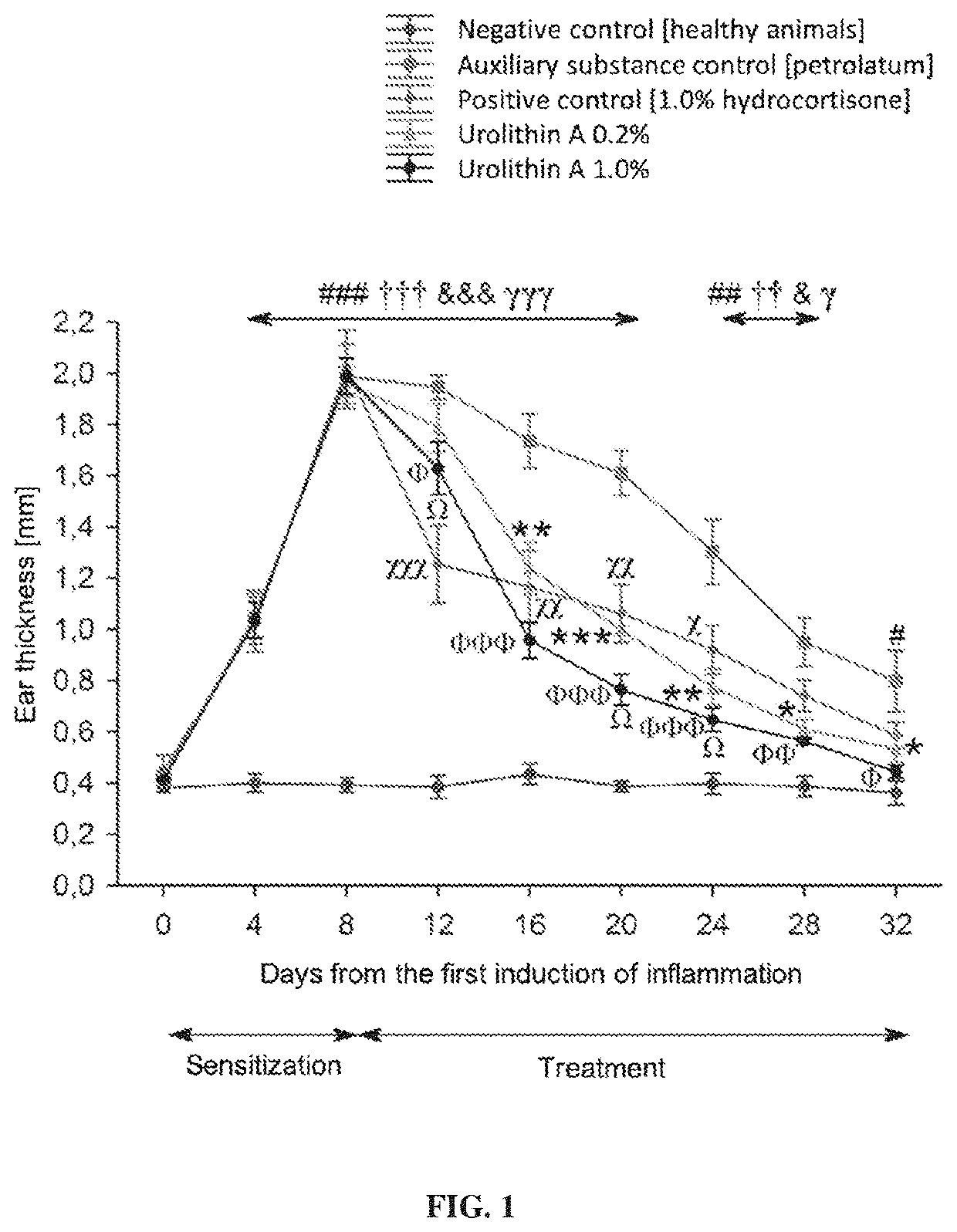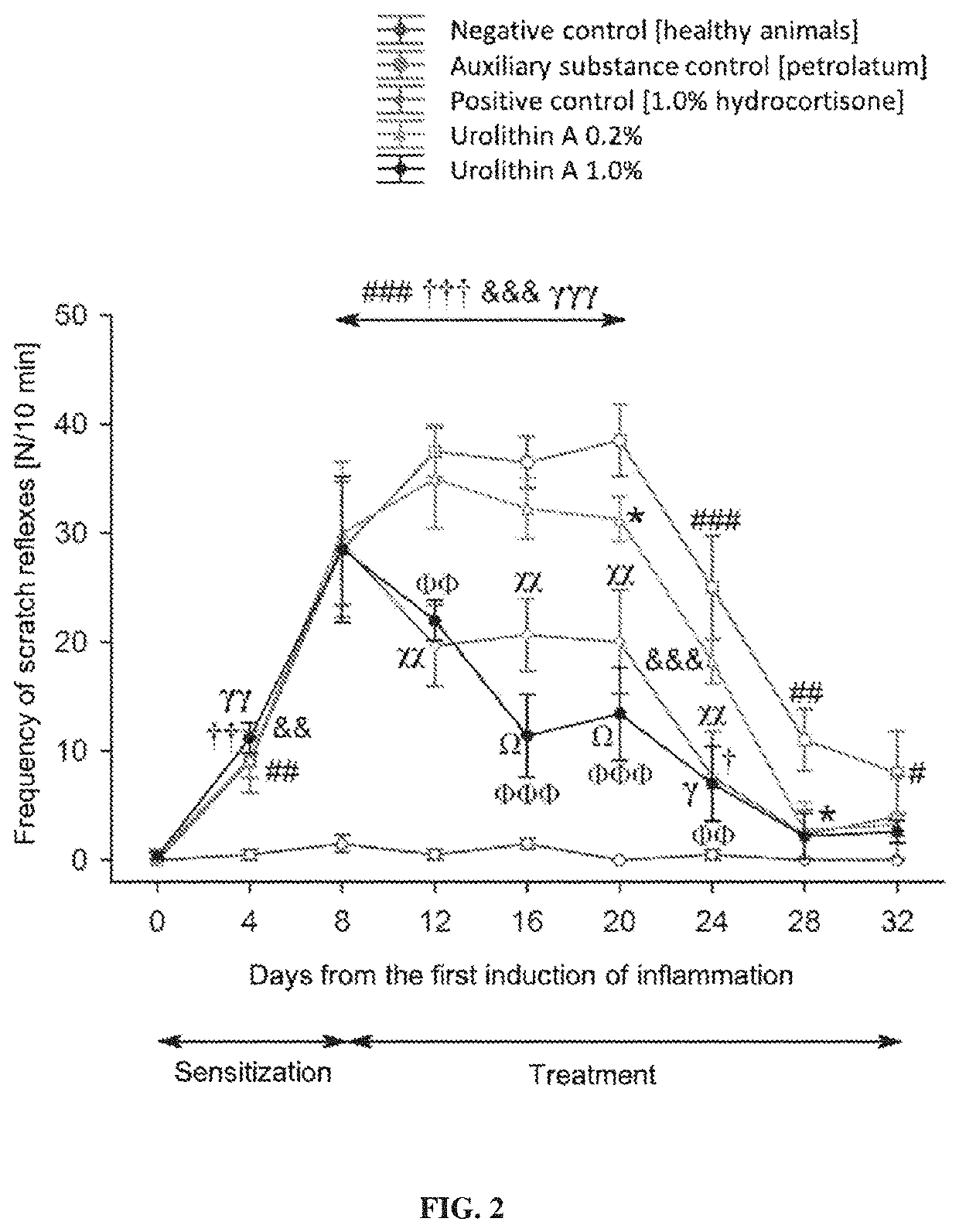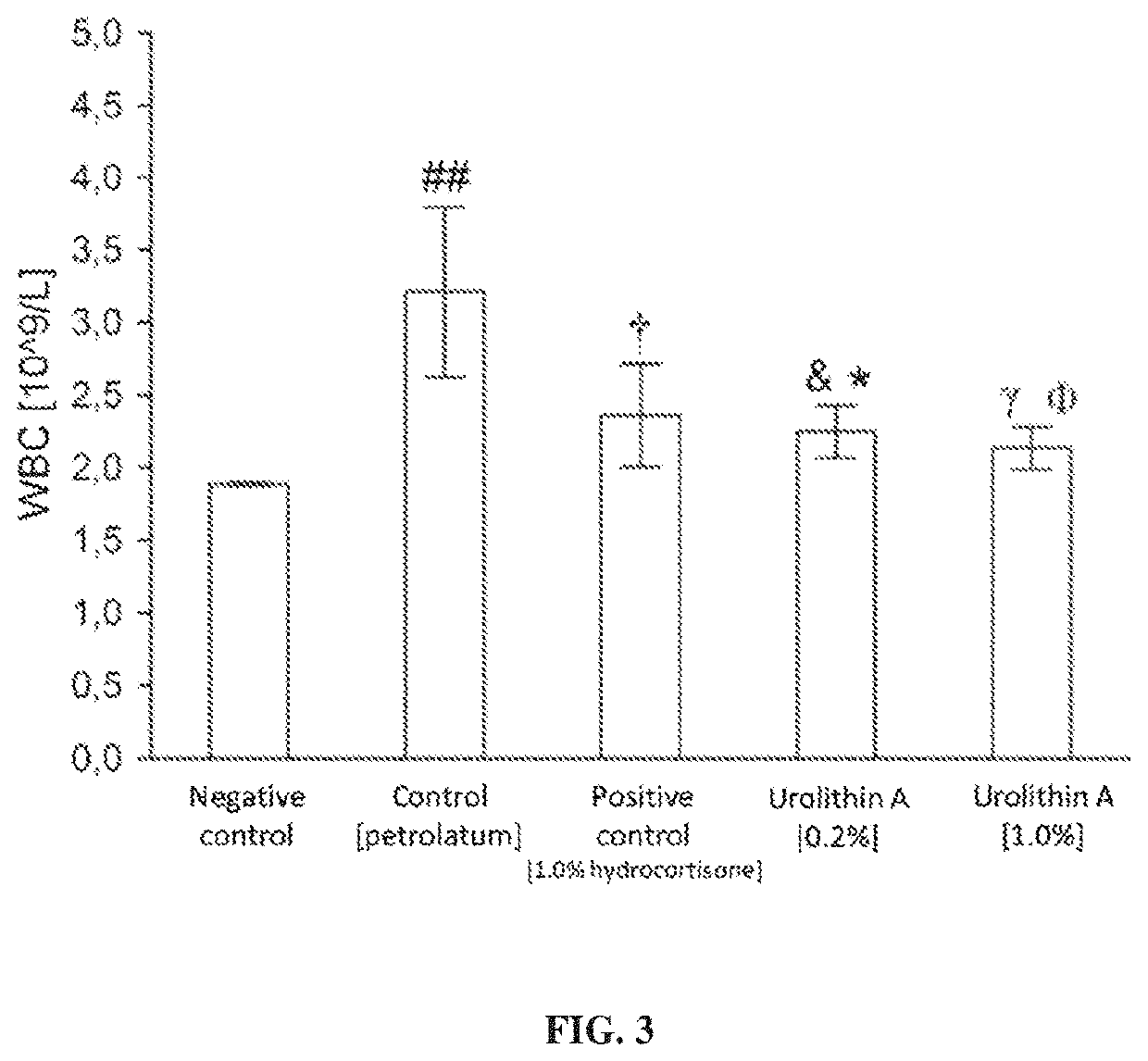Urolithin a and a composition containing same for external use in inflammations of various etiologies
a technology of urolithin and composition, which is applied in the field of urolithin a and composition for external use in inflammations of various etiologies, can solve the problems of insufficient or even doubtful bioavailability of urolithin in the unchanged state, complex pathogenesis of ad, and achieves the effects of convenient processing, low cost and easy availability
- Summary
- Abstract
- Description
- Claims
- Application Information
AI Technical Summary
Benefits of technology
Problems solved by technology
Method used
Image
Examples
Embodiment Construction
[0047]As indicated above, the subject of the present invention is a pharmaceutical composition for external use containing urolithin A as the active ingredient. Preferably, the subject of the present invention is a composition of the invention for external use containing synthetic urolithin A, which in nature is a metabolite of intestinal microbiota. Urolithin A has anti-inflammatory properties used in the treatment of inflammations of skin and mucous membranes.
[0048]More specifically, the invention discloses urolithin A for topical use in the treatment, inhibition and prevention of inflammatory diseases of skin and mucous membranes, in particular: skin inflammations, vasculitides, lupus erythematosus, dermatomyositis, scleroderma, multiple sclerosis, giant cell arteritis, psoriasis, atopic dermatitis, seborrheic dermatitis, contact dermatitis, urticaria, rosacea, dermatitis herpetiformis, lichen planus, hidradenitis suppurativa, pityriasis rosea of Gibert, hydrocystoma, aphthae, di...
PUM
| Property | Measurement | Unit |
|---|---|---|
| concentration | aaaaa | aaaaa |
| concentration | aaaaa | aaaaa |
| total volume | aaaaa | aaaaa |
Abstract
Description
Claims
Application Information
 Login to View More
Login to View More - R&D
- Intellectual Property
- Life Sciences
- Materials
- Tech Scout
- Unparalleled Data Quality
- Higher Quality Content
- 60% Fewer Hallucinations
Browse by: Latest US Patents, China's latest patents, Technical Efficacy Thesaurus, Application Domain, Technology Topic, Popular Technical Reports.
© 2025 PatSnap. All rights reserved.Legal|Privacy policy|Modern Slavery Act Transparency Statement|Sitemap|About US| Contact US: help@patsnap.com



